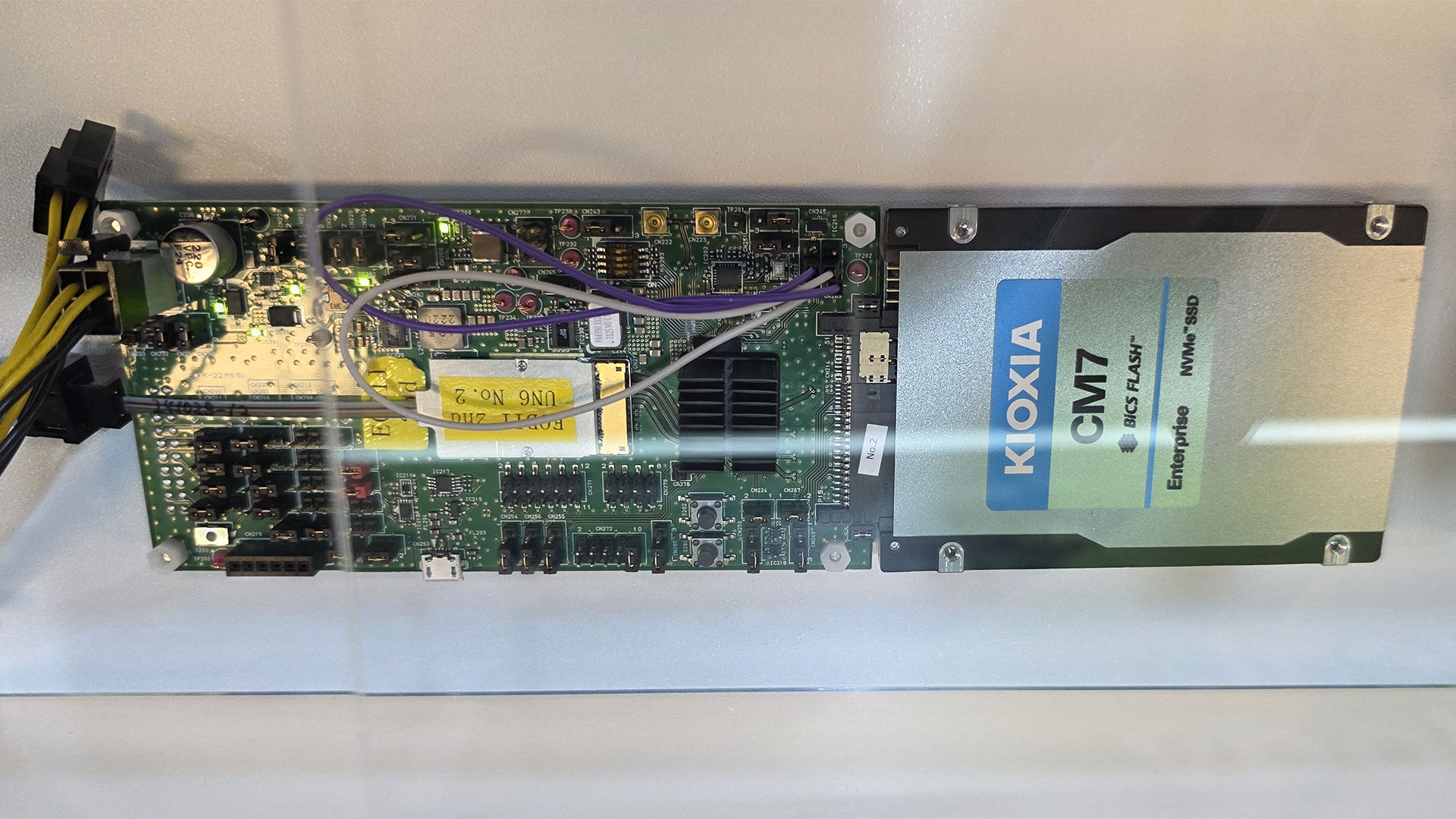Kioxia demos optical SSD, boasts of high performance and 30m+ cabling
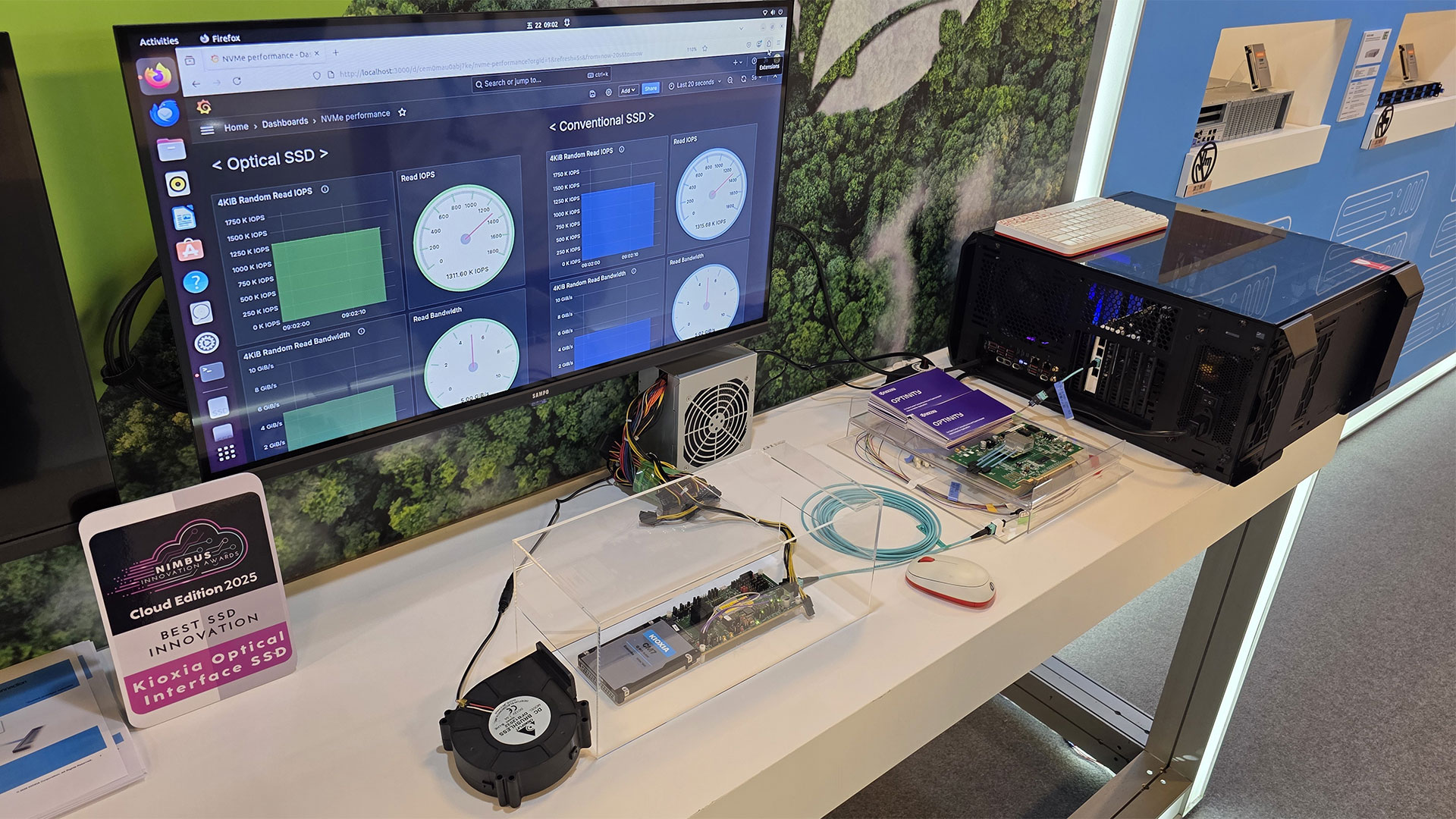
Kioxia showed off its latest optical SSD technology at Computex 2025. According to the storage giant, this new solution offers several key advantages over conventional electrically connected SDDs. The most important benefit we saw was the ability to offer the same performance as a conventional SSD even if connected via optical cabling 30m long (or more). Kyocera was Kioxia’s partner in this demo, as the system used featured one of its Optinity PCIe cards.
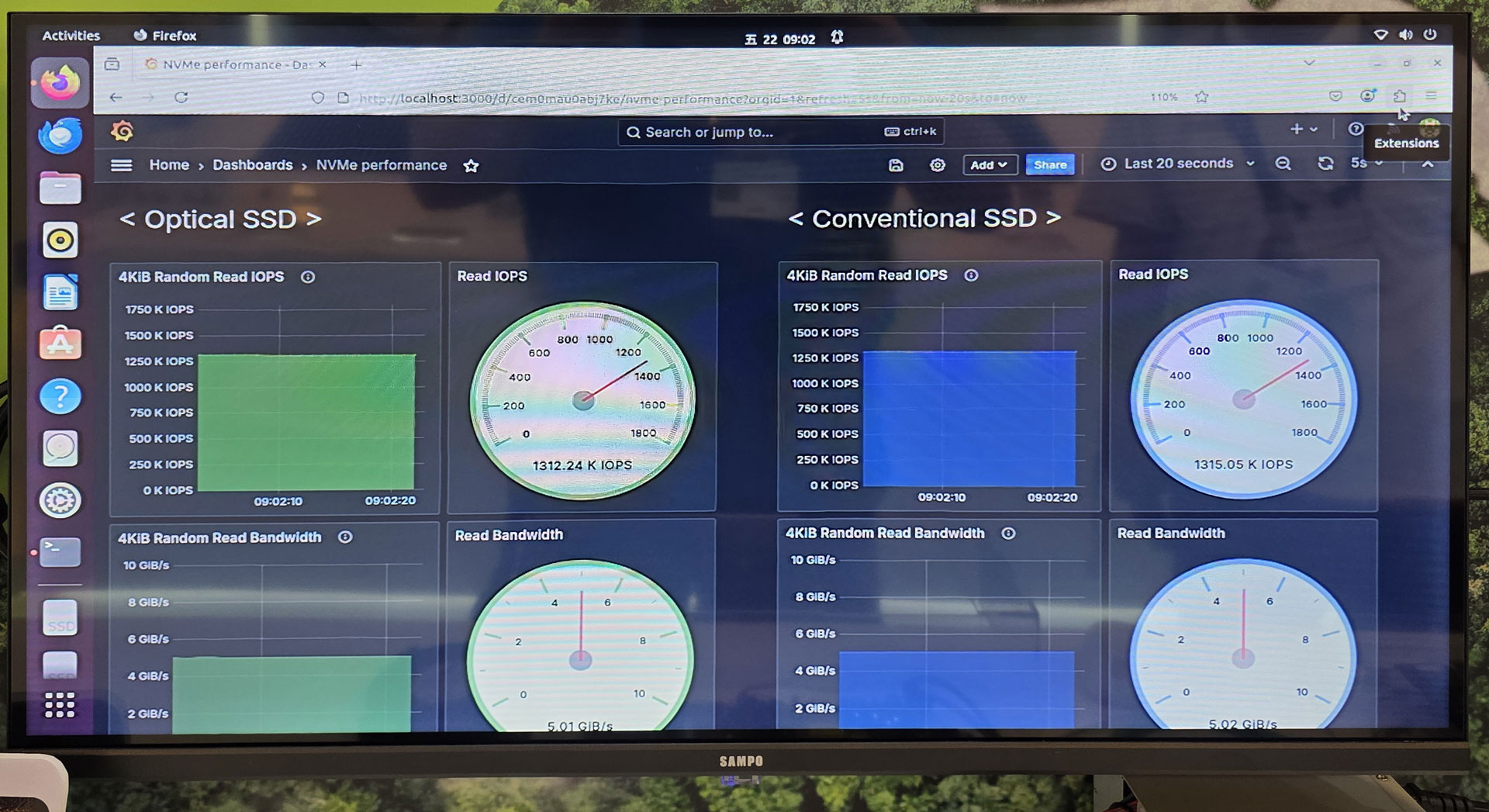

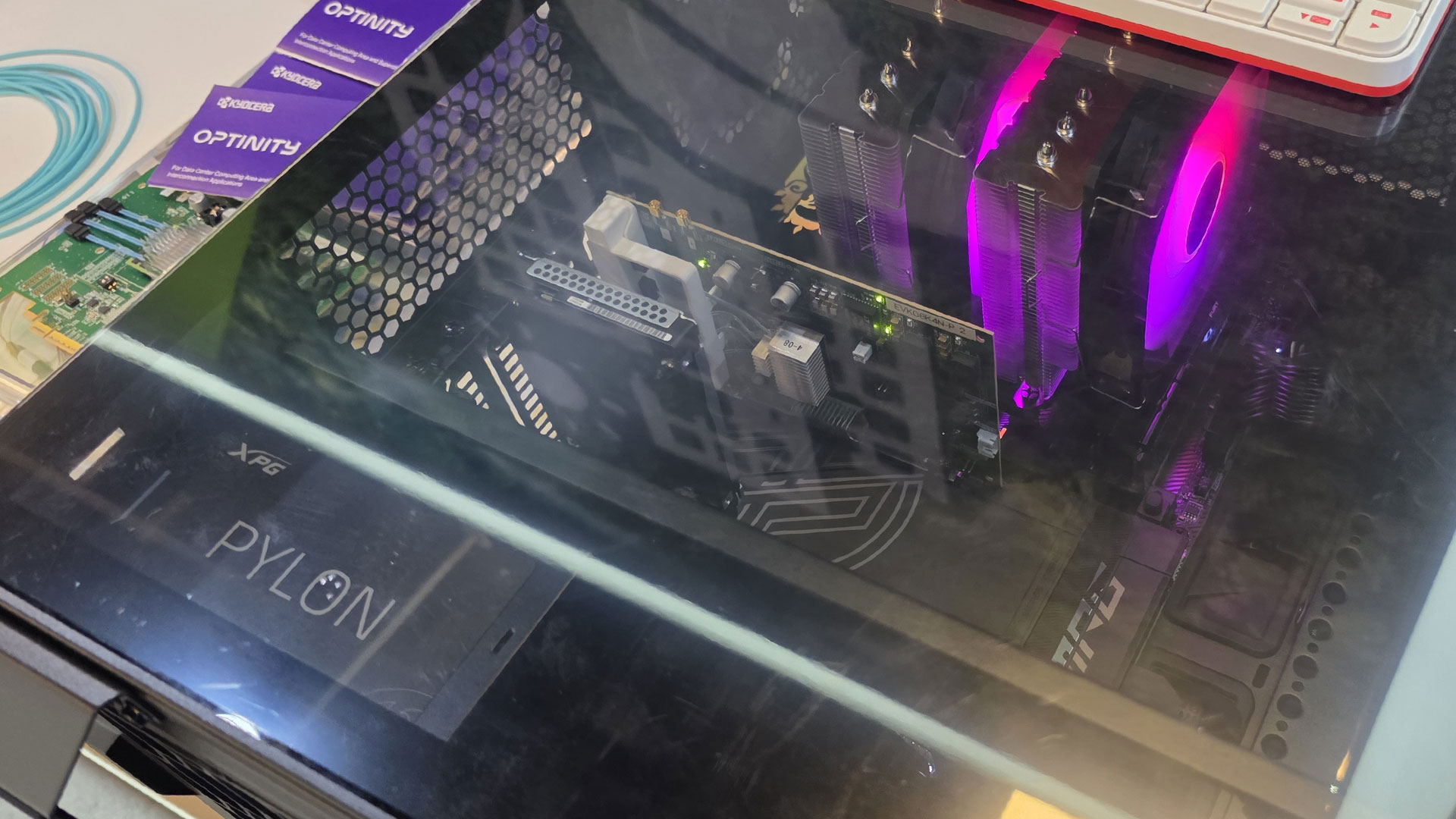
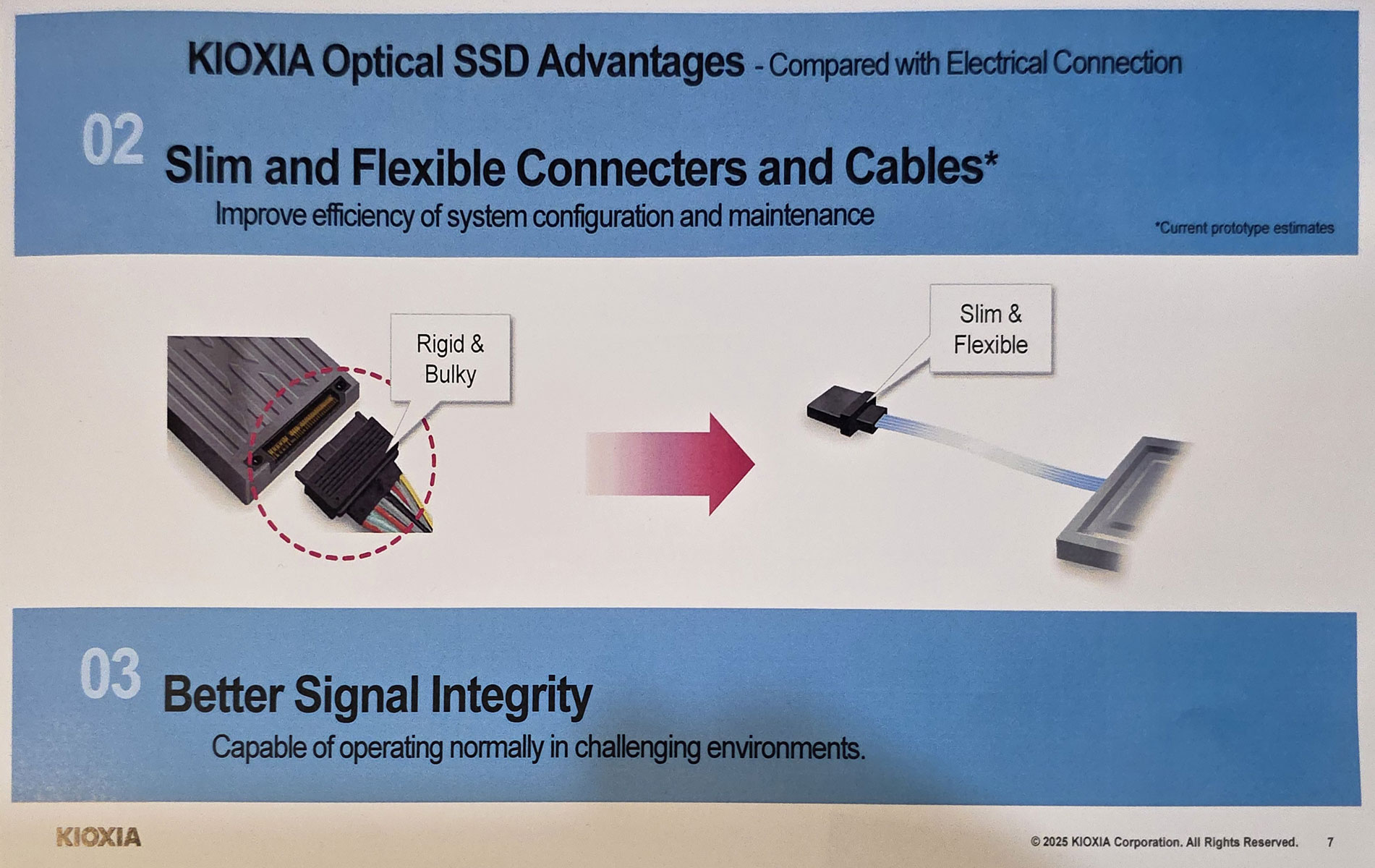
Normally, a demo like this might yield eye-popping performance numbers. However, Kioxia showed its prototype running at the same performance as a conventional rival in terms of IOPS and bandwidth.
The special sauce here is all about the impressively extended reach, with cabling of up to 30m and beyond not impacting the SSD performance. Moreover, Kioxia stated that its slim and flexible connectors and cables were an advantage of its optical SSDs. Last but not least, these connections also offer “better signal integrity” over conventional electrical wiring, which can shrug off “challenging environments,” according to Kioxia.
If you look at the demo hardware, you may naturally question the assertion about slim and flexible connectors and cables. Kioxia told us that the large PCB you see attached to the CM7 Enterprise SSD will actually be miniaturized and shrunk to fit within the SSD shell. That seems like quite a feat considering the board is perhaps 150% the size of the CM7 Enterprise SSD at this time.
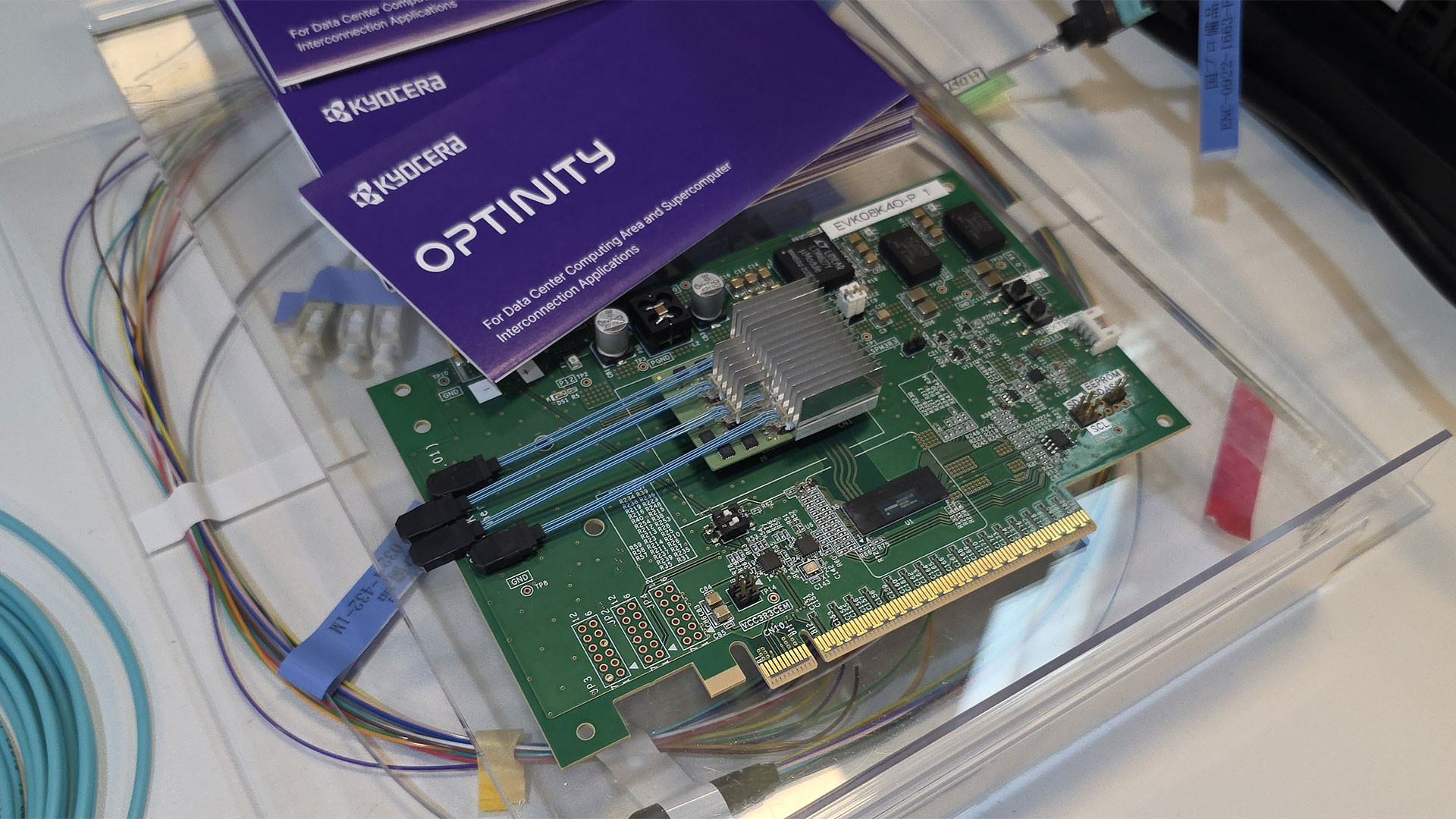
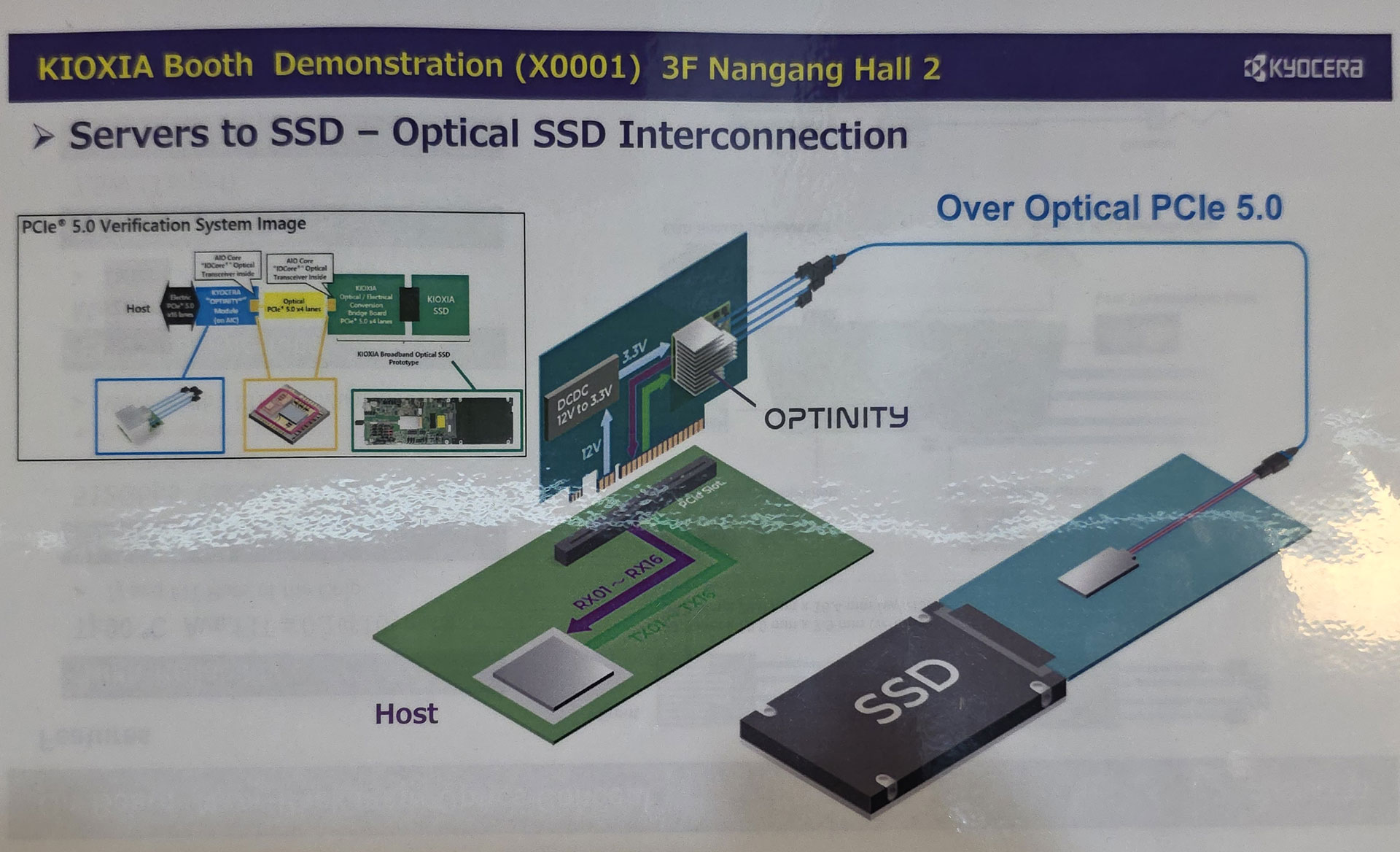
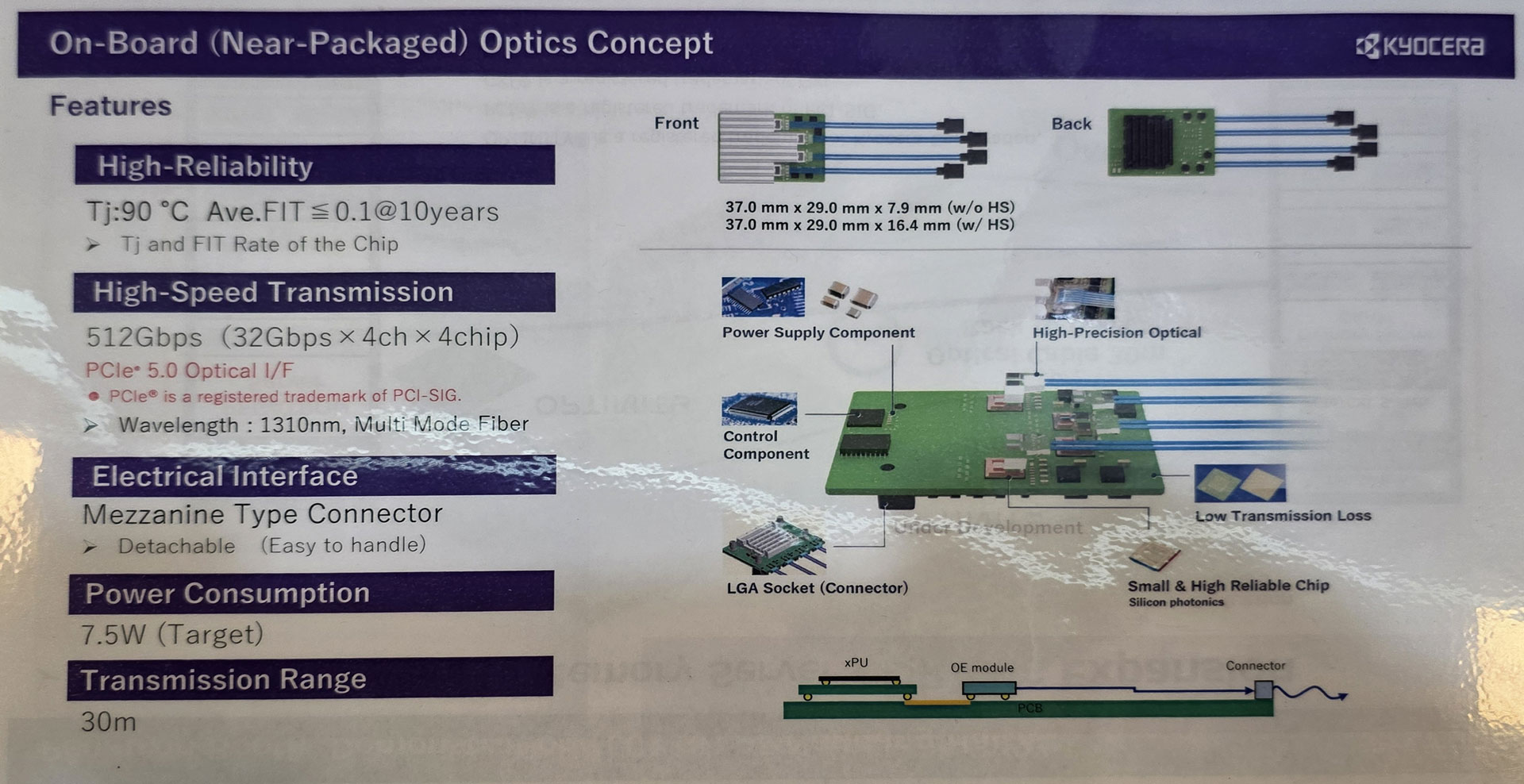

As mentioned in the intro, Kyocera was Kioxia’s partner in this demo. The system pictured featured one of Kyocera’s Optinity PCIe cards, delivering optical connectivity over PCIe Gen5. This solution targets high-performance servers, and in one of the slides, you can see not just flash storage, but also DRAM being utilized via optical cabling of 30m in length. Another slide indicates that Optinity can handle up to 512 Gbps bandwidth.
We also heard from a representative at the Kioxia booth that the above-quoted 30m optical connection length wasn’t a hard limit. If a system maker used higher-grade, thicker optical cabling, this distance could be extended. Previously, we reported on Kioxia testing optical connections of 40m or so.
Follow Tom's Hardware on Google News to get our up-to-date news, analysis, and reviews in your feeds. Make sure to click the Follow button.
Get Tom's Hardware's best news and in-depth reviews, straight to your inbox.

Mark Tyson is a news editor at Tom's Hardware. He enjoys covering the full breadth of PC tech; from business and semiconductor design to products approaching the edge of reason.
- Paul AlcornEditor-in-Chief
